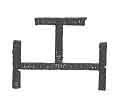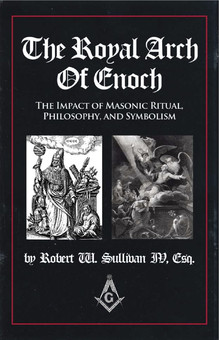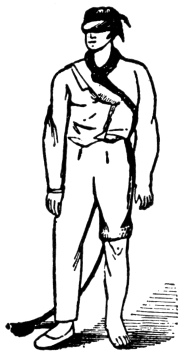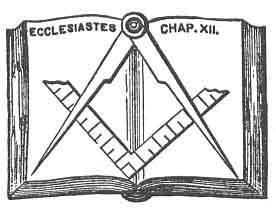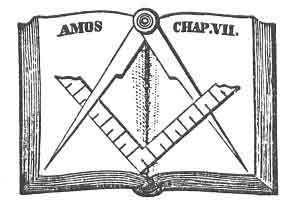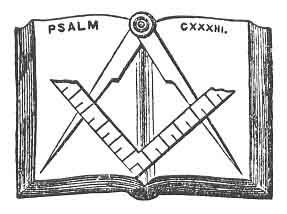Footnotes
218:1 In America, we find an essential variation from any other system of the Royal Arch. The names of the officers vary materially, as also do the ceremonies. As in Ireland, it constitutes the Seventh Degree, although the intermediate steps are different. In Ireland they are: 1. E. A. P.; 2. F. C.; 3. M. M.; 4. P. M.; 5. Excellent; 6. Super-Excellent: 7. Royal Arch: while in America the Fourth is Mark Master; 5. P. M.; 6. Most Excellent Master; 7. Royal Arch.–Origin of the English Royal Arch, p. 58.
219:1 The members of this Degree are denominated companions, and are “entitled to a full explanation of the mysteries of the Order”; whereas in the former Degrees they are recognized by the common, familiar appellation of brothers, and kept in a state of profound ignorance of the sublime secret which is disclosed in this Chapter. This accords with the custom of Pythagoras, who thus distinguished his pupils. After a probation of five years, as before stated, they were admitted into the presence of the preceptor, called his companions, and permitted freely to converse with him. Previously to the expiration of that term he delivered his instructions to them from behind a screen.–Fellows’s Inquiry into the Origin, History, and Purport of Freemasonry, p. 321.
224:1 Cole adopts the following sentiment of a brother Mason: “In the R. A. (Royal Arch) Mason’s Degree I beheld myself exalted to the top of Pisgah, an extensive scene opened to my view of the glory and goodness of the M. E. H. P. (Most Excellent High Priest) of our salvation. I dug deep for hidden treasures, found them, and regained the omnific word.”
“If we pass on to the Royal Arch,” says the Rev. G. Oliver, in his p. 225 Lectures on Freemasonry, “we receive a wonderful accession of knowledge, and find every thing made perfect; for this is the ne plus ultra of Masonry, and can never be exceeded by any human institution.”–Fellows’s Inquiry into the Origin, History, and Purport of Freemasonry, p. 322.
A Degree indescribably more august, sublime, and important than any which precede it, and is, in fact, the summit and perfection of ancient Masonry. It impresses on our minds a belief in the being of a God, without beginning of days or end of years, the great and incomprehensible Alpha and Omega, and reminds us of the reverence which is due to His Holy NAME.–Historical Landmarks, vol. i. p. 86.
226:1 This ineffable name (in INDIA) was Aum, which, in its triliteral form, was significant of the creative, preservative, and destroying power, that is, of Brahma, Vishnu, and Siva.–Lexicon, p. 146.
JEHOVAH. Of the varieties of this sacred name in use among the different nations of the earth, three particularly merit the attention of Royal Arch Masons:
1. JAH. This name of God is found in the 68th Psalm, v. 4.
2. BAAL OR BEL. This word signifies a lord, master, or possessor, and hence it was applied by many of the nations of the East to denote the Lord of all things, and the Master of the world.
3. ON. This was the name by which JEHOVAH was worshipped among the Egyptians.
I have made these remarks on the three names of God in Chaldaic, Syriac and Egyptian, Baal, Jah, and On, in the expectation that my Royal Arch Companions will readily recognize them in a corrupted form.–Lexicon.
242:1 Candidates at the present day usually descend the vault by means of a ladder.
243:1 A candidate is said to be EXALTED when he receives the Degree of Holy Royal Arch, the Seventh in York Masonry. Exalted means elevated or lifted up, and is applicable both to a peculiar ceremony of the Degree, and to the fact that this Degree, in the rite in which it is practised, constitutes the summit of ancient Masonry.–Lexicon.
246:1 The foundations of the Temple were opened and cleared from the accumulation of rubbish, that a level site might be procured for the commencement of the building. While engaged in excavations for this purpose, three fortunate sojourners are said to have discovered our ancient stone of foundation, which had been deposited in the secret crypt by Wisdom, Strength, and Beauty, to prevent the communication of ineffable secrets to profane or unworthy persons. The discovery having been communicated to the prince, priest, and prophet of the Jews, the stone was adopted as the chief corner-stone of the re-edified building; and thus became, in a new and expressive sense, the type of a more excellent dispensation. An avenue was also accidentally discovered, supported by seven pairs of pillars, perfect and entire, which, from their situation, had escaped the fury of the flames that had consumed the Temple, and the desolation of war which had destroyed the city. This secret vault, which had been built by Solomon as a secure depository for certain valuable secrets, that would inevitably have been lost without some such expedient for their preservation, communicated by a subterranean avenue with the King’s palace; but at the destruction of Jerusalem, the entrance having been closed by the rubbish of falling buildings, it had been now discovered by the appearance of a keystone among the foundations of the Sanctum Sanctorum. A careful inspection was then made, and the invaluable secrets were placed in safe custody.–Historical Landmarks, vol. ii. p. 434.

Moe is the founder of GnosticWarrior.com. He is a father, husband, author, martial arts black belt, and an expert in Gnosticism, the occult, and esotericism.

